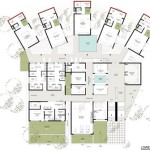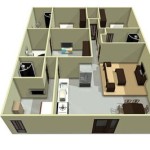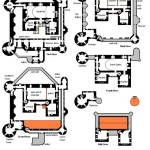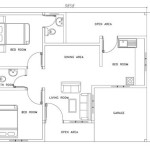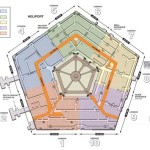Floor Plan of a Roman House
Roman houses were designed to accommodate the needs of their inhabitants, from wealthy aristocrats to modest families. The floor plan of a Roman house typically consisted of several rooms arranged around a central courtyard, or atrium. The atrium was the heart of the house, serving as a gathering space, dining area, and reception room for guests.
The entrance to the house was through a small vestibule, which led into the atrium. The atrium was surrounded by a colonnade, or row of columns, which supported the roof. In the center of the atrium was a shallow pool, or impluvium, which collected rainwater. The rainwater was used for drinking, bathing, and irrigation.
Off the atrium were several rooms, including the tablinum, or study; the triclinium, or dining room; and the cubiculum, or bedroom. The tablinum was often used by the paterfamilias, or head of the household, to conduct business. The triclinium was where the family ate their meals. The cubiculum was where the family slept.
In addition to these main rooms, Roman houses also had a number of other rooms, including a kitchen, a bathroom, and a storage room. The kitchen was typically located at the back of the house, and was equipped with a stove, an oven, and a sink. The bathroom was usually located next to the kitchen, and was equipped with a toilet, a bathtub, and a washbasin.
The storage room was typically located in the basement of the house, and was used to store food, wine, and other supplies. Roman houses were typically built with thick walls and high ceilings, which helped to keep them cool in the summer and warm in the winter.
The floor plan of a Roman house was designed to be practical and comfortable, and it reflected the lifestyle of the Roman people. Roman houses were typically built to last, and many of them are still standing today, providing us with a glimpse into the lives of the people who lived in them.

Roman House

Roman Domestic Architecture Domus Article Khan Academy

Elegant Roman House With Atrium And

Plan Of A Pompeian House Roman Courtyard Plans Villa

Floor Plan Of A Typical Roman Atrium House Scientific Diagram

Pin By Rebecca Koch On Ancient Rome Roman Bath House Floor Plans

House Of The Vine Museums Victoria

Roman Houses And Villas

Roman House Layout Villa Ancient Houses

House Domus Roman Villa Ancient Architecture Angle White Text Png Pngwing

